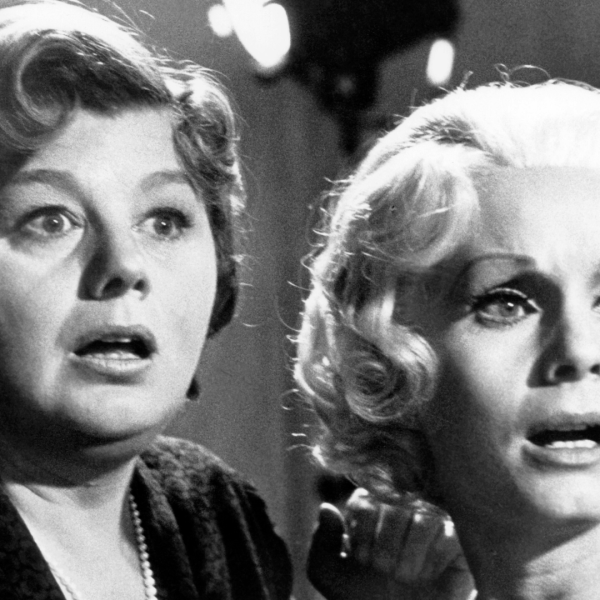
A few years ago, Disney planned a theatrical release for a 3D version of “Beauty & the Beast,” using the cutting edge, post-“Avatar” technology that we’ve all come to know so well (and sometimes dread just as much). The conversion took place, at great expense, but the theatrical engagement (originally set for February, 2010) never materialized. Still, the studio pressed ahead (Walt always said that good ideas never die), and this week the studio’s traditionally animated crown jewel “The Lion King,” in a shiny new 3D format, will get a proper release – in 2,000 3D screens across the country. But what does a 3D version of a traditionally animated movie look like, exactly? And is it worth seeing again, with a 3D ticket surcharge no less?
Well, the answer is yes – “The Lion King” still maintains the majestic sparkle and Shakespearean plotting that made it such an indelible smash at the time of its release (way back in 1994). The centerpiece of the fabled Second Disney Renaissance (a period of time expertly captured in the ace documentary “Waking Sleeping Beauty“), it’s just as sophisticated and fun as you remember it and if you’ve never seen it before, well, it looks and sounds better than it ever has before.

If you don’t have children or have been out of the country for the past few decades, the plot of “The Lion King” is borrowed from “Hamlet,” with a scheming lion named Scar (Jeremy Irons, walking the fine line between menacing and camp) scheming to take over rule of Pride Rock from his noble brother Mufasa (James Early Jones) by killing Mufasa and his young cub Simba (Jonathan Taylor Thomas as a cub, Matthew Broderick in adulthood). The story may follow familiar story beats from earlier Disney animated films, including “Bambi” (death of a father) and “Beauty & the Beast” (accepting who you are, reclaiming your place), but it was a bold departure in a lot of ways, and still seems sort of revolutionary. For one, it wasn’t based on any preexisting story or mythology. It was a Disney original, and what’s more, it’s set in a universe populated solely by animals (including a warthog and meerkat, voiced by Ernie Sabella and Nathan Lane), the first time that had been done since “Robin Hood” (but those animals are way more humanlike – they’re wearing pants!)
Simba’s journey – from outcast to ruler of the land – is just as engaging as it was the first time around and what’s even more staggering this time around is how much thematic and emotional ground the film covers in its spare 89 minute runtime. Themes of revenge, loss, acceptance, responsibility and grief are beautifully engaged right next to a musical number devoted to a farting pig. Speaking of the songs, by Elton John and Tim Rice with a score by Hans Zimmer, aren’t as magical this time around, with some of the songs sounding tinny, thin, and overtly artificial – but you’ll still be humming them when you leave the theater. You can tell the movie has been cleaned up, too – the artwork and animation (accomplished by a veritable who’s-who of top animation talent) has never looked so good. As charming as this summer’s traditionally animated “Winnie the Pooh” was, it lacks the primal sophistication of “Lion King,” with its wind-swept planes, steam-spewing geysers, and population of intricately rendered creatures.
The 3D-ization of a 2D animated movie is an intriguing idea, too. After all, adding an extra layer of dimension would in effect just be the next evolutionary step of the multi-plane camera system that Walt Disney himself revolutionized with “Snow White and the Seven Dwarves” (and the studio used up until “The Little Mermaid” in 1989). The multi-plane camera would look down, onto multiple planes of artwork. As the different layers would move past the camera, it would create the sensation of movement and depth – of “pushing in” on something, or moving through a geographic location, even though everything involved in the shot was two dimensional.
The technology has advanced considerably since “Snow White and the Seven Dwarves,” obviously, and the process of conversion has been made much easier thanks to the CAPS coloring and compositing software that Pixar developed and Disney has been using since “Beauty & the Beast,” which allows for you to essentially “break up” any given scene in the computer, so that you can choose what to emphasize and what to leave flat. 
It’s still a tough balancing act, though. If you had pushed the 3D it would have looked too much like a pop-up book, or something Baz Luhrmann had imagined in a particularly vivid dream. Dampen the dimensionality and you would wonder what, exactly, was accomplished with the retrofit. Thankfully, the converters have taken a very even approach – there’s depth but it’s never overdone. The effect is the most noticeable during the musical sequences – there’s a moment in the opening, tear-wrenching “Circle of Life” sequence where a flock of birds drifts closer to the audience than ever before, and you could hear people audibly gasp at the new layer of dimensionality.
“The Lion King” remains a masterpiece of modern animation, and the new 3D presentation, with unobtrusive added dimensionality and a healthy technological spit-shine, perfectly illuminates its artistic and thematic accomplishments. It’s beautiful, heartbreaking, often hilarious (we had forgotten about how great Rowan Atkinson‘s duckbilled majordomo was) stuff and well worth seeing again in a large-screen format. This is especially true if you have children (or know children) who haven’t seen the film before. While you fall in love with it all over again, they’ll fall in love with it for the first time. Now that’s downright magical. [A]




